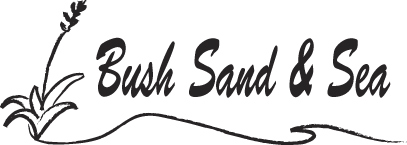16 July 2018 UPDATE to KAURI DIEBACK. Sadly, much of the Waitakere Ranges’s tracks are now closed under Biosecurity regulations. Some tracks are still open and The Aritaki Visitor Centre is where you can get THE BEST and most up to date information. Check them out on https://www.aucklandcouncil.govt.nz/parks-recreation/Pages/park-details.aspx?Location=204.
Luckily the walkway from Te Henga to Muriwai beach is still open, as are all the west coast beaches. There is still so much to see and do in our area!
4 January 2018
Kauri Dieback and Tracks in Waitakere Ranges January 2017
Kauri Dieback disease is affecting our Waitakere Ranges. I have compiled this blog with reference and thanks to many sources, in the hope that it will help our caring and discerning Guests who were hoping to come to us at Bush Sand and Sea B&B, and to explore our wonderful but sadly under threat Waitakere Ranges. A Rāhui has been placed over the Waitakere Ranges in a bid to stop the spread of kauri dieback disease. In Māori culture, a rāhui is a form of tapu restricting access to, or use of, an area or resource by unauthorised persons. For example Rahui are often used to manage coastal fisheries. This means that visitors are not able to use most of the walking tracks in the Waitakere ranges.
We still have a magnificent coastal walk available, part of the Hillary Trail, from Muriwai to Te Henga (Bethells Beach), approximately 4-5 hrs. You can enjoy the wonderfully wild beach, a walk to Lake Wainamu and almost 1km of track on our own land which is all-weather with its boardwalk and 4 bridges. On our track you can see some Kauri trees but we ask you to observe the shoe washing instructions and keep to the track.
Our Kauri trees are one of Aotearoa’s unique taonga. But kauri dieback is threatening kauri with extinction. There is no cure for kauri dieback yet, and it can be spread by just a pinhead of soil. But kauri will be saved – by people like you. Our closest tracks are in the Cascades. We, at Bush Sand and Sea B&B support the Rahui placed by Te Kaweraua a Maki in December. Here is a great video in which our own Local, Rewi Spraggon, explains the reason for this unusual action.
https://www.facebook.com/waitakererahui/videos/544001365961084/
Royal Forest and Bird Protection Society of New Zealand also support this position, as do many Organizations, Locals and private individuals. The Waitakere Rahui Facebook page is:https://www.facebook.com/hashtag/protectourkauri?source=feed_text
It is fair to say that this extreme,(but essential view in our opinion), is different to that of our own Auckland Council. On December 5, Auckland City councillors have voted to close high- and medium-risk tracks to manage the spread of the disease.
Kauri dieback is a disease caused by Phytophthora agathidicida, a fungus-like organism and can be deadly for kauri trees of all ages. It is devastating our kauri trees. Kauri dieback lives in soil and infects kauri roots. Nearly all infected kauri die – there is no known resistance or treatment to the disease.
The report from Auckland Council shows that the rate of infection in the Waitakere Ranges Regional Park (WRRP) has doubled in the last five years bringing up the question of whether preventing all public access to the park is needed to protect the trees from continued spread of the disease.
The Department of Conservation (DOC) have this to say on http://www.doc.govt.nz/our-work/kauri-dieback-recreation-project/
If you’re looking for a bushwalk, choose somewhere that isn’t in the Waitākere Ranges. Here are some great walks in
south, centraland north Auckland. In general, you should always:
- Clean all soil off your footwear and other gear, every time you enter or leave a forest/area with native trees, and at every cleaning station.
- Use disinfectant only after you have removed all the soil.
As far as I am aware, if you are heading North after leaving us, you can still visit the fabulous Tane Mahuta
FINALLY, Is the disease found overseas, and if so, what are the protection measures elsewhere?
“The disease has not been found overseas. However, many other countries have had to manage Phytophthora diseases, such as Phytophthora dieback of Jarrah trees in Australia, Sudden Oak Death in the US, etc.” ref.https://www.sciencemediacentre.co.nz/2017/08/10/kauri-dieback-waitakere-ranges-expert-reaction/
KAURI TREE
https://en.wikipedia.org/wiki/Agathis_australis
http://www.backpackerguide.nz/the-9-golden-picture-frames-in-auckland/
